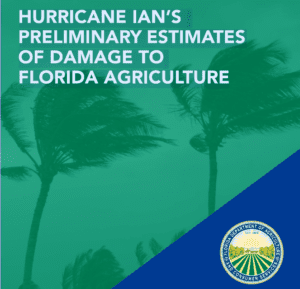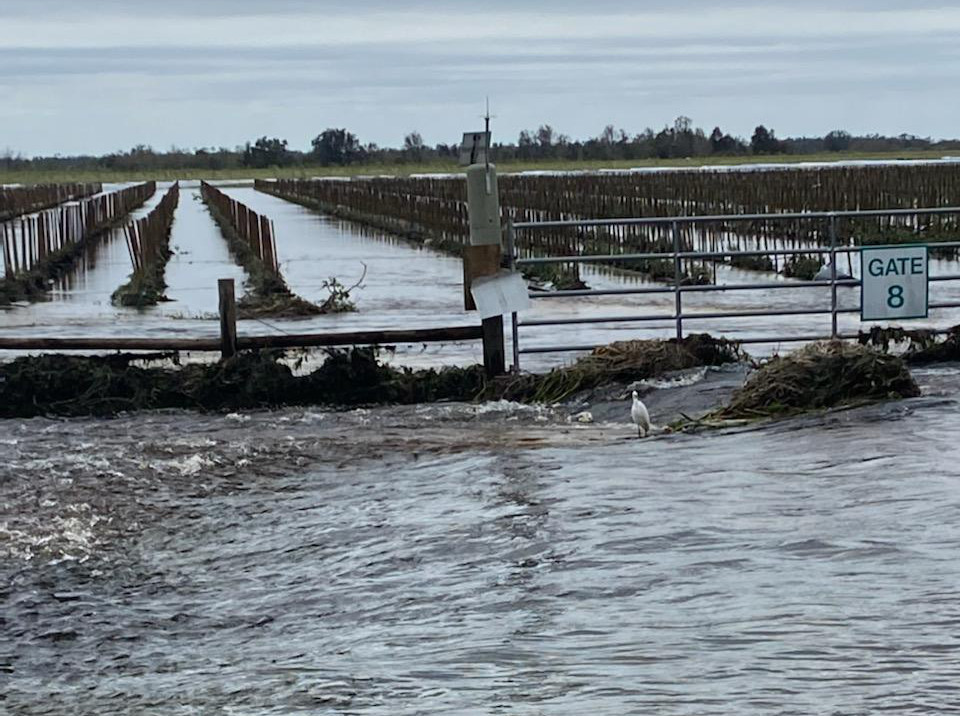Oct 24, 2022New report estimates Hurricane Ian damage
Hurricane Ian caused up to $1.8 billion in losses to Florida agriculture production and infrastructure, according to an Oct. 24 report from the Florida Department of Agriculture and Consumer Services (FDACS).
While the damage estimate for all Florida agriculture has increased, the report estimates losses sustained by Florida fruit and vegetable growers as declining. Total crop losses for fruits and vegetables are estimated at 10 percent to 15 percent in the affected counties, with a value of $153.7 million to $230.5 million. That’s lower than UF’s $208 million to $394 million projections.
 The $1.8 billion overall loss is higher than the $1.56 billion preliminary damage estimate released Oct. 19 by University of Florida (UF) Institute of Food and Agricultural Sciences (IFAS) economists. FDACS’ assessment initially estimated total agricultural losses between $1.1 billion and $1.8 billion.
The $1.8 billion overall loss is higher than the $1.56 billion preliminary damage estimate released Oct. 19 by University of Florida (UF) Institute of Food and Agricultural Sciences (IFAS) economists. FDACS’ assessment initially estimated total agricultural losses between $1.1 billion and $1.8 billion.
Total crop losses for fruits and vegetables (excluding citrus) are estimated at 10 percent to 15 percent in the affected counties, with a value of $153.7 million to $230.5 million, lower than UF’s $208 million to $394 million estimates.
The fruit and vegetables segment excludes citrus but includes melons and berries.
Florida is a major fall, winter and spring producer of fruits and vegetables, with more than $1.72 billion cash receipts in 2019. Major crops include fresh market tomatoes, bell peppers, melons, potatoes and strawberries.
Hurricane and tropical storm winds from Hurricane Ian, which struck southwest and central Florida in late September, affected an estimated 187,871 acres of Florida fruits and vegetables. Up to 55,113 acres experienced winds exceeding 111 miles per-hour; 37,329 acres experienced winds between 74 and 110 mph, with 95,429 acres witnessed winds between 39 and 73 mph.
As Florida’s fall planting season was getting into full gear when Hurricane Ian hit, many fields lost the plastic and drip-tape irrigation that had been installed. In addition to blown plastic and irrigation, growers reported clean-up costs which are a significant portion of the total estimated losses, according to the report.
Several growers are also reporting heavy infrastructure losses, including flooding and damage to internal farm roads, dikes, water control structures and retention areas.
“While today’s assessment is a preliminary snapshot of the losses to Florida agriculture, it is a critical first step in the process of securing federal disaster aid for our hard-working producers,” Agriculture Commissioner Nikki Fried said in an Oct. 24 statement. “We will continue our close collaboration on the ground with industry partners to gain further insight into the depth and breadth of Ian’s damage. As we move ahead on the road to recovery, I look forward to working with Florida’s congressional delegation and our U.S. Senators on a relief package to help restore Florida’s second largest industry.”
The FDACS damage assessment is available here.

















